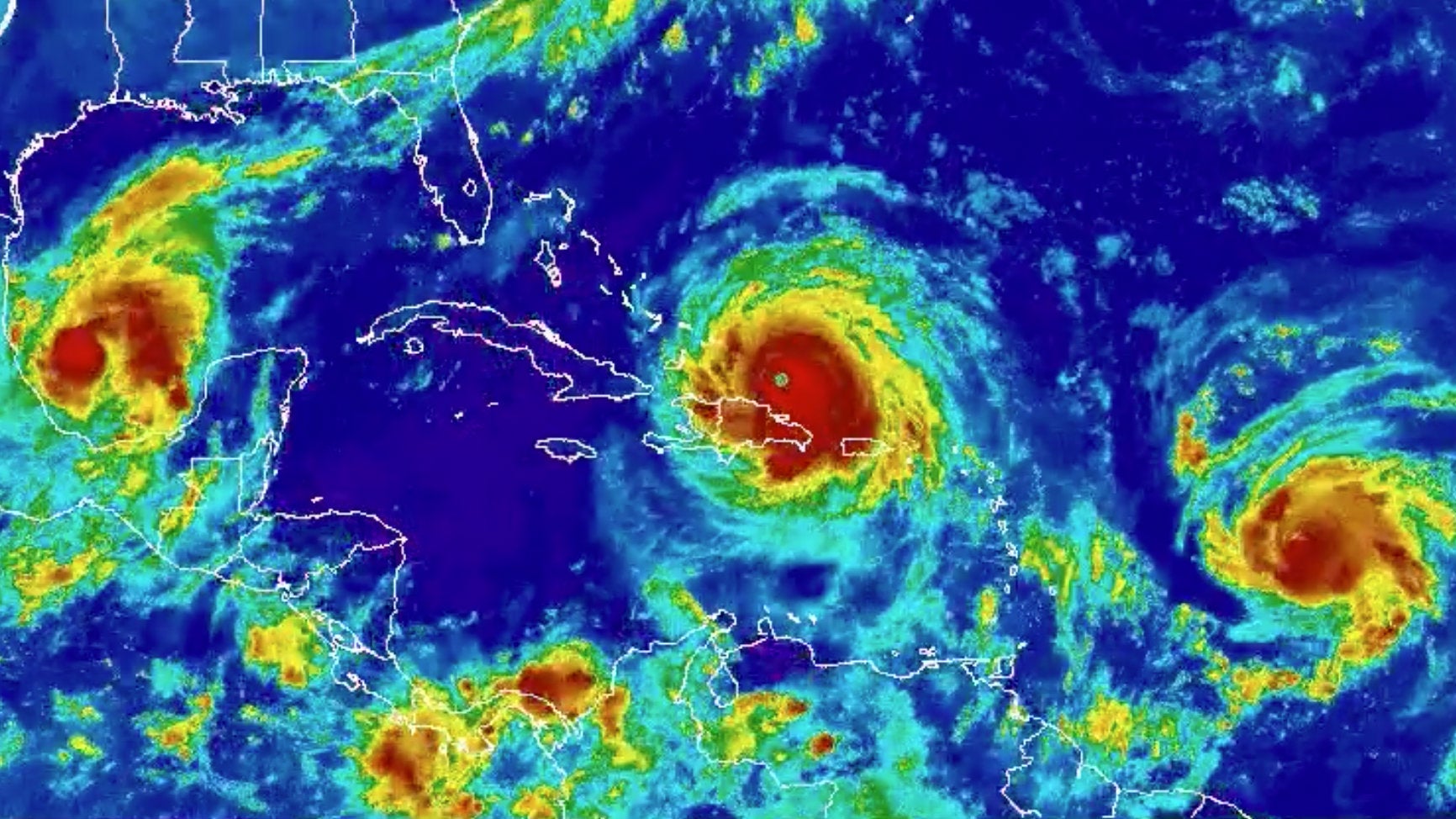Hurricane scientists have never seen an image like this before
For the first time in modern history, three hurricanes in the Atlantic are lined up in the most dangerous of ways, according to Eric Blake, a hurricane specialist at the National Hurricane Center.


For the first time in modern history, three hurricanes in the Atlantic are lined up in the most dangerous of ways, according to Eric Blake, a hurricane specialist at the National Hurricane Center.
The National Hurricane Center (NHC) has issued advisories on Hurricane Irma (currently located north of the Dominican Republic), Hurricane Jose (700 miles east of the Lesser Antilles), and Hurricane Katia (over the southwestern Gulf of Mexico).
The Atlantic experienced three simultaneous hurricanes in 2010, with Igor, Julia, and Karl all swirling in the basin at the same time. Julia never threatened land, so the NHC didn’t issue a warning for North America. This is the first time that three hurricanes have the potential to make landfall at the same time.
What climate change creates
The rising strength and potential impact of the hurricanes in the Atlantic basin has weather experts concerned, as global temperatures continuing to hit record highs. Global warming, which isn’t necessarily causing the formation of hurricanes, is almost certainly magnifying their intensity and potential for destruction.
Climate change is making hurricanes more powerful for longer periods of time. They need the energy from the warm, humid air above tropical oceans to keep up their strength. A hurricane begins as a tropical storm, when winds coming from different directions converge. Warm air rises around the storm’s center and cools, and the moisture condenses to form clouds and rain. Condensation releases latent heat, which powers hurricanes. If the layer of warm water isn’t at least 200 feet deep, a tropical storm could die before gaining hurricane strength.
The potential for destruction is also greater because warmer temperatures mean the air can hold more moisture, so hurricanes produce more rain, causing more floods. Rising sea levels also lead to greater and greater surges after a storm.
Other factors also have impact
It’s important to note that just because there are three hurricanes in the Atlantic basin right now, doesn’t mean climate change has made 2017 a particularly bad year in terms of the total number of storms. Scientists caution there is a relatively low amount of hurricane data available (only a handful of storms happen each year), so it’s difficult to make broad observations.
Dr. Gerry Bell, lead seasonal hurricane forecaster at the National Oceanic and Atmospheric Administration’s Climate Prediction Center, told The New York Times warming waters, along with a relative lack of sudden wind shift, have created optimal hurricane conditions this season.
Some environmentalists think it is a “moral duty” to talk about the role climate change plays in making these three hurricanes so intense. Global warming is a long-term threat, yet research has shown that short-term concerns are what really motivate humans. And the scientific community feels it’s a conversation we should be having when storms strike.
The sooner we start the conversation, the more people will see global warming as having a direct impact on natural disasters. Only then can start the next one: how to actually do something about it.